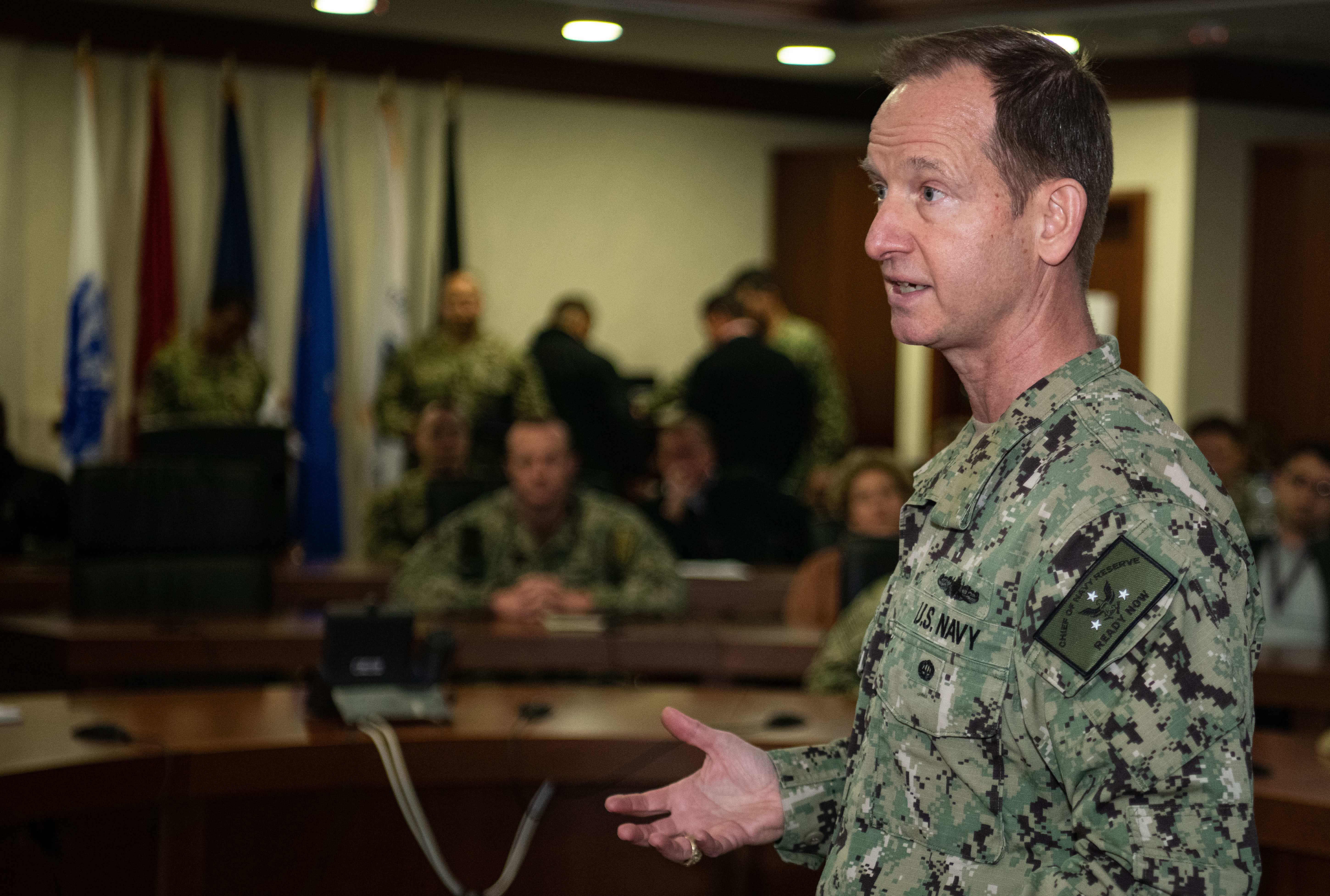
This story has been updated to clarify comments from Vice Adm. John Mustin.
The Navy Reserve is emphasizing benefits from medical care to transferability of education benefits to commissary and exchange privileges to attract exiting active-duty sailors to sign up, Vice Adm. John Mustin said Wednesday.
The Navy Reserve is struggling with recruiting, its chief said. This falls in line with all the other services and reserve components reports on shortfalls they’re experiencing in attracting qualified recruits last year, and 2023 was not looking very promising.
Speaking at a Navy Memorial online forum, Mustin said, “I want 80 percent [of reserve accessions] to be prior service.” He added, “we want to make it clear to them” that choosing the reserves is a good career choice that allows them to spend more time with their families, pursue their own educations using Selective Reserve tuition assistance or start a business. It also provides them an opportunity to continue serving. Mustin said the Navy Reserve’s current mix is running 60 percent prior service and 40 percent new recruits.
“We need to be clever” to attract prior service sailors and officers to come aboard.
As he told Proceedings in a recent interview, “We love to get officers coming off active duty who are already wearing warfare devices. It’s hard for the Reserve to send a prospective junior officer to flight school or BUD/S or Surface Warfare Officers School.”
The Navy Reserve recently stood up a recruiting command to directly address these issues and meet the needs for a different reserve force going forward, Mustin said. The Navy Reserve has about 45,000 selective reservists and 10,000 in the Training and Administration of the Reserve.
The Navy Reserve is undergoing “tectonic change” from one that sent Individual Augmentees involuntarily forward to a land-based fight in Afghanistan and Iraq where their specialized skills might not be needed to an era of maritime Great Power competition, Mustin said.
That change was reflected in his “Navy Battle Orders Plan 2032.” He described the message as a “wake-up call” to the changed security environment. The instructions laid out how the Navy Reserve was to be designed, train and mobilize.
“You’ve got be ready to go when we ask you,” Mustin said.
It also re-emphasized the Navy Reserve’s role in providing “strategic depth” to the fleet, as well as operational support, he added.
The Navy Reserve could have 50,000 sailors available for duty in 30 days by decentralizing where sailors are to report, Mustin said as an example of the benefits of changes to mobilization. Before they all were to head to Norfolk to report, be processed and changed in systems of pay.
“Training for activation/mobilization was standardized and command and control of the mobilization authority was centralized under the Navy Reserve,” according to the latest instructions. “The new mass activation processes were tested during major exercises during fiscal years 2021 and 2022.”
In his tenure as chief, Mustin wanted to focus on warfighting in training, which required the Navy Reserve to determine a strategic reference point so he could take stock of where it was today.
“We need to recognize it’s 2023” and “leverage the technology we have” to aggregate the data as to what was actually going on at each training center, Mustin said.
He then purchased 15,000 desktop computers to provide a baseline that could be upgraded with new software and apps.
Metrics could now be established, allowing the Navy Reserve to answer to what end the activity was accomplishing.
The “Navy Reserve 2022 Fighting Instructions” explain “why we’re doing what we’re doing,” he said. The latest document “ties up a lot of loose ends” by adding the word “develop” and forecasting out a decade instead of 30 years.
One way of looking ahead was to reduce the “Individual Augmentee burden,” he said. “Instead of IA’ing them [to an assignment], we’re going to PCS them” when the requirement for a specific billet shows up repeatedly at a certain place.
The demand for IAs has dropped since the American withdrawal from Afghanistan and shift in mission in Iraq to between 2,500 and 3,000 now, Mustin said.
More than 80 percent of those assignments are voluntary.
Mustin said his biggest hardware need is replacing the Navy Reserve’s 19 C-130Ts and 11 KC-130Ts with J models. The Navy Reserve is the only component still flying “the three decades old C-130Ts,” he said.





